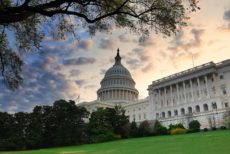I learned a lot about miracles recently thanks to a penetrating sermon by pastor Mark McNees of Element3 Church, a “progressive” non-denominational church in Tallahassee. And it prompted a lot of thinking about markets and entrepreneurship, particularly entrepreneurship as conceived by Austrian economists, most notably Israel Kirzner. (Kirzner is required reading in my social entrepreneurship seminar at Florida State University.) It also happens to be the conceptual foundation for my novel St. Nic, Inc. which uses a Hayekian and Kirznerian framework to show in the context of a re-imagined Santa Claus allegory on how markets and entrepreneurs benefit society and what happens when bureaucrats don’t understand them.
The point of this post is not to evangelize Christianity. But McNees’ sermon provided a layered approach to understanding the “miracle” of modern entrepreneurship using a biblical context and then demonstrating a real-world application (although I’m not sure he would characterize it in this way). So it would be both disingenuous and inaccurate to relate the insight I gleaned, which is quite secular, without it. McNees was discussing the miracle of Jesus feeding 4,000 people (Matt 15:32-39). For days, Jesus healed the lame, the crippled, the blind, the mute and others. Then he realized that all these thousands didn’t have enough to eat. His disciples asked Jesus where they would get enough food to feed them. Jesus replied: “How much bread do you have?” The disciples said seven loaves and some small fish. Hardly enough to feed them let alone thousands, right? Well Jesus takes the bread and begins breaking it up until the thousands are fed and they have more than enough. Pretty fantastical from a conventional western rationalist perspective. In fact, many people use these kinds of biblical stories to demonstrate the implausibility and irrationality of religion and Christianity specifically.
But here’s the rub: Entrepreneurs perform these “miracles” every day in the real world. This is what entrepreneurs and innovators do. They identify–“discover”–opportunities and bring resources to bear on solving practical problems in ways no one else thinks could be done. The disciples didn’t believe that seven loaves of bread and a few fish could feed thousands. That’s what people tell entrepreneurs all the the time: they don’t have the knowledge, the resources, the money, the expertise, the access to markets for their vision–whether a product or service–to become reality. Entrepreneurs take a loaf of bread and figure out a way to make it feed thousands and make the world a better place.
McNees didn’t use this economic framework explicitly, but his illustration of a modern-day miracle was an allegory for this kind of entrepreneurship. Two years ago, McNees and members of Element3 church met a boy in Haiti, Jovens, without functioning legs in the slum of the poorest city in the poorest country in the Western Hemisphere. The boy’s plight touched him deeply, and he vowed (he was “called”) to do something about this child’s situation (in addition to all the other work Element3 was doing in Haiti, Central America, and Tallahassee). He didn’t know how he would do it–after all, he’s just a pastor, not a doctor, not a surgeon, not a prosthetic designer or manufacturer, and not a wealthy philanthropist–but he determined to make it happen. He had a vision for Jovens. For two years, he worked with members of the church, tapped into his network in Tallahassee and the nation, and identified new resources to make it happen. Last week, Jovens, the boy without legs, was walking for the first time in his life using a US manufactured, customized prosthetic leg. He was playing basketball, and even danced. He was smiling for the first time anyone could remember. (Here is a short video of Jovens’ miracle.)
Is Jovens’ leg a miracle? Yes, by any reasonable definition. Jovens’ life was transformed in a way he, his family, or his community had never had envisioned, let alone contemplated. Yet, now, the crippled boy can walk. His community was transformed by the commitment of a man and a church in Tallahassee. For the church, hundreds of individuals were inspired by the power of one person to change the world for the better. And they had no idea how it would happen when they took on their mission. So, yes, in all the practical meanings of the word, this was a miracle. It was also entrepreneurship–seeing the possibility of what could be done with a grander vision and faith in the individual, as opposed to limiting oneself to what exists and what can be seen today.
But this story is about more than one boy or one pastor or even one Church. This is the kind of vision, commitment and faith that drives individuals of all types to make the world a better place. This is the core of entrepreneurship and innovation as conceived by Israel Kirzner and made possible by civil society and Hayekian spontaneous order. These are the concepts that inspired my novel St. Nic, Inc., which uses the same framework to show, in a practical way, how a billion dollar global enterprise could in fact provide toys to millions of children through the “miracle” of the market, spontaneous order, and Kirznerian entrepreneurship.
This kind of entrepreneurship is also what inspires many Millennials, and I see this in my seminar on social entrepreneurship. They want to make miracles happen. We use the framework of market-based entrepreneurship to show students how to embrace their visions for improving the world and commit themselves to creating their own miracles. My students can take their time and ambition and create business plans with the potential to lift up scores, dozens, and even hundreds of people without resources or networks that no one knew existed or be created. This is the fundamental nature of spontaneous order, the essence of the discovery process identified by Kirzner in his classic book Competition and Entrepreneurship.
So, yes, miracles exist, and entrepreneurs are the ones who make them happen.
 How big is government in the United States? The answer depends on the concept used to define its size. Although many such concepts are available, and several are used from time to time, by far the most common measure, especially in studies by economists, is total government spending (G) as a percentage of the gross domestic product (GDP).
How big is government in the United States? The answer depends on the concept used to define its size. Although many such concepts are available, and several are used from time to time, by far the most common measure, especially in studies by economists, is total government spending (G) as a percentage of the gross domestic product (GDP).
 This week is National Sunshine Week, a time when many journalists across America publish stories on government spending and transparency. One organization that needs more sunshine is the Institute for Research on Labor and Employment (IRLE) at the University of California at Berkeley, a union propaganda mill disguised as an academic think tank and financed with taxpayer dollars.
This week is National Sunshine Week, a time when many journalists across America publish stories on government spending and transparency. One organization that needs more sunshine is the Institute for Research on Labor and Employment (IRLE) at the University of California at Berkeley, a union propaganda mill disguised as an academic think tank and financed with taxpayer dollars.




